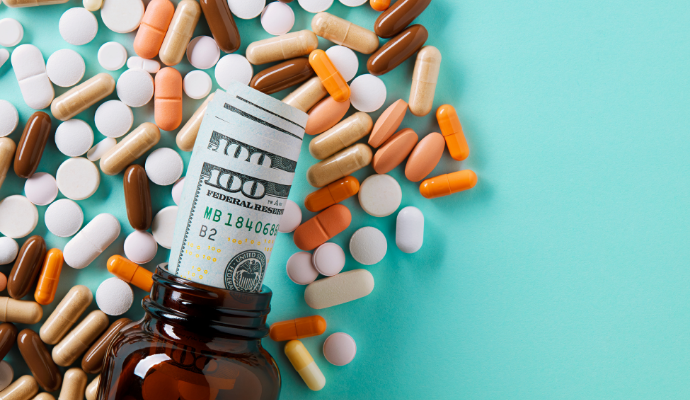Few Drugs Make Half of Medicare Prescription Drug Spending
A small number of drugs accounted for a large share of Medicare prescription drug spending in 2019, and those drugs generally didn’t have generic or biosimilar competitors.

Source: Getty Images
- A Kaiser Family Foundation analysis recently found that a small number drugs accounted for a disproportionate share of Medicare prescription drug spending in 2019.
Researchers measured the share of total Medicare Part D and Part B drug spending for by looking at top-selling drugs covered under each part.
They found that overall, Medicare Part D and Part B spending was concentrated among a fairly small share of covered drugs and those drugs generally did not have generic or biosimilar competitors.
Specifically, the 250 top-selling drugs in Medicare Part D with one manufacturer and one generic or biosimilar competition accounted for 60 percent of net total Part D spending in 2019.
To calculate Medicare Part D data, researchers applied average rebates from a CBO analysis of prices for top-selling brand-name drugs to derive an estimate of net Medicare Part D spending of $145 billion in 2019.
For specialty drugs, researchers applied a rebate of 12 percent, and for non-specialty brand-name drugs, they applied a rebate of 47 percent
About 2,208 drugs with one manufacturer accounted for 13 percent of net total Part D spending in 2019, while all other covered Part D drugs accounted for 27 percent of net total spending.
The average net cost per claim across the top 250 drugs with one manufacturer was $5,750, more than double as much as the average net cost per claim for the remaining 2,208 drugs with one manufacturer.
The cost per claim was also over 13 times greater than the average net cost per claim for all other covered Part D drugs ($422).
And the 10 top-selling Part D covered drugs with no generic or biosimilar competition in 2019 accounted for 0.3 percent of all covered products, but 16 percent of net total Part D spending that year, researchers explained.
The top-selling Medicare Part D drugs included Revlimid, Eliquis, Januvia, Xarelto, Imbruvica, Trulicity, Ibrance, Humira Pen, Victoza 3-Pak, and Lantus Solostar.
On the other hand, Medicare Part B covers prescription drugs administered by physicians and other providers in outpatient settings. Part B covers a smaller number of drugs than Part D, researchers explained.
Specifically, Part B covered less than 600 drug products in 2019, with total spending of $37 billion. But many Part B covered drugs were costly and concentrated on specific medications.
The top 50 drugs covered under Medicare Part B in 2019 accounted for 80 percent of total Part B drug spending, while the top 100 drugs account for 93 percent of the total.
And the remaining 485 covered Part B drugs accounted for just 7 percent of total Part B spending in 2019.
Additionally, the top 10 Part B covered drugs in the same year made up two percent of all covered products but 43 percent of total Part B drug spending that year.
The top drugs included four cancer medications, two medications for macular degeneration, two rheumatoid arthritis treatments, one osteoporosis drug, and one bone marrow stimulant. The total spending for these drugs ranged from $2.9 billion to $0.9 billion.
Overall, the 10 top-selling drugs in Medicare Part B included Eylea, Keytruda, Opdivo, Rituxan, Prolia, Lucentis, Neulasta, Avastin, Orencia, and Remicade.
In October 2020, the House passed legislation (H.R. 3) to allow the federal government to negotiate drug prices for Medicare Part D, Medicare’s outpatient prescription drug benefit, and private insurers.
And the Trump Administration issued a final rule to establish a model through CMS Innovation Center that would base Medicare’s payment for the 50 highest-spending Part B drugs on the lowest price by similar countries.
But researchers stated that these drug pricing proposals raise the question of whether limiting the number of drugs subject to government price negotiation or international reference pricing might leave substantial savings on the table.
“In considering whether to broaden these proposals to focus on all prescription drugs, policymakers may want to consider whether doing so would achieve sufficient savings to justify the added administrative burden and associated costs,” researchers stated.
